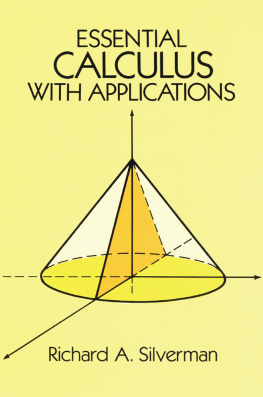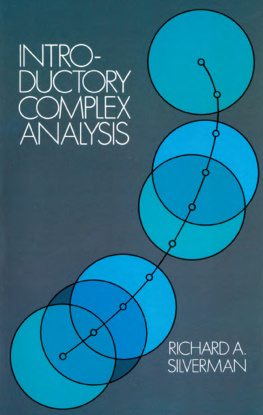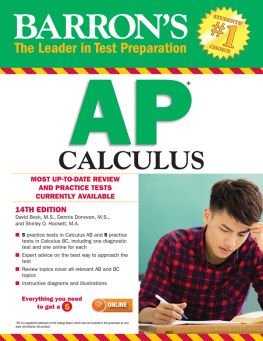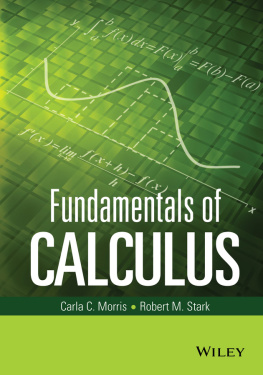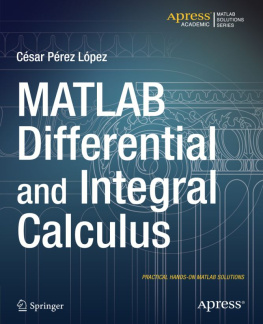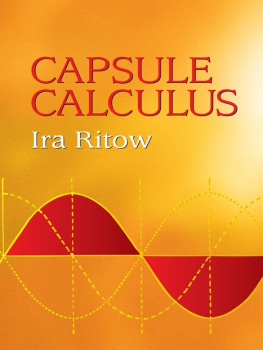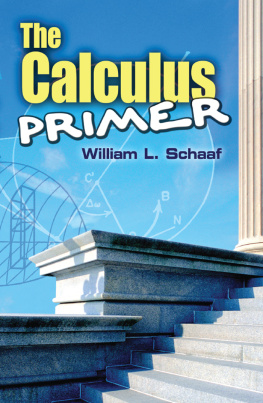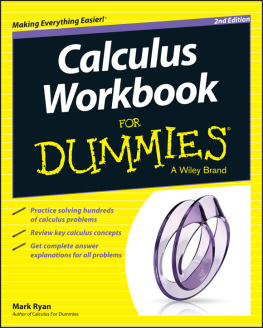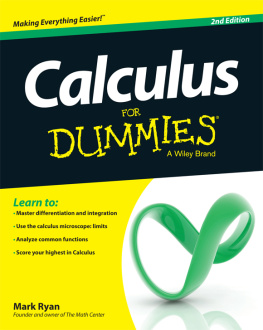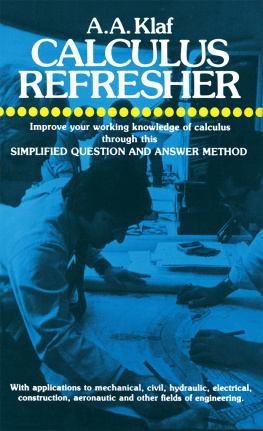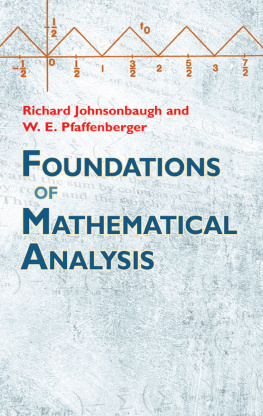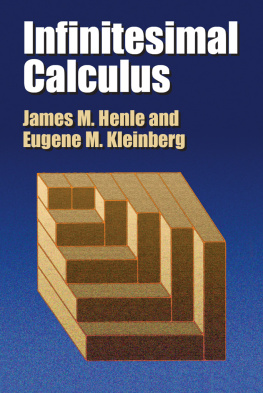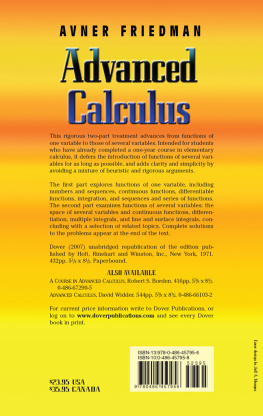ESSENTIAL
CALCULUS
with Applications
RICHARD A. SILVERMAN DOVER PUBLICATIONS, INC. New York
In Memory of A.G.S. Copyright 1977, 1989 by Richard A. Silverman. All rights reserved.
This Dover edition, first published in 1989, is a corrected, slightly enlarged republication of the work first published by the W. B. Saunders Company, Philadelphia, 1977. The section Supplementary Hints and Answers, originally issued in a separate instructors manual, has been added to the Dover edition by the author, who has also corrected a number of errors in the original text. Library of Congress Cataloging-in-Publication Data Silverman, Richard A. Silverman. p. cm. cm.
Corrected, slightly enlarged republication of the work first published by the W. B. Saunders Company, Philadelphia, 1977. The section Supplementary Hints and Answers, originally issued in a separate instructors manual, has been added to the Dover edition by the author, who has also corrected a number of errors in the original text. Includes index. Calculus. I. Title. Title.
QA303.S55432 1989
Manufactured in the United States by Courier Corporation 66097412 www.doverpublications.com TO THE INSTRUCTOR The attributes and philosophy of this book are best described by giving a running synopsis of each of the six chapters. This summary is accompanied by open expressions of my pedagogical preferences. Like most authors, I tend to regard these not as idiosyncrasies, but as the only reasonable way to do things! If you disagree in spots, I hope you will attribute this lack of modesty to an excess of enthusiasm, an occupational hazard of those with the effrontery to write books. The contents of , regardless of their starting points, and those few who are there already can spend their spare time solving extra problems while the others catch up! The class is now ready to attack , the student encounters one-to-one functions and inverse functions, and then composite functions and sequences after specializing to numerical functions of a single variable. Graphs of equations and functions are treated in terms of solution sets, with due regard for parity of functions and its consequences for the symmetry of their graphs. Having mastered the concept of function, in all its various manifestations, the student now arrives at ).
It is now time for the student to learn more about limits. This is done in , admittedly a long one, closes with a comprehensive but concise treatment of limits of other kinds, namely, limits involving infinity, asymptotes, the limit of an infinite sequence, and the sum of an infinite series. Once having grasped the concept of the limit of a function at a point, the student should have little further difficulty in assimilating these variants of the limit concept, and this seems to me the logical place to introduce them. In differentiation is used as a tool, and the book takes a more practical turn. I feel that the concept of velocity merits a section of its own, as do related rates and the concept of marginality in economic theory. It is then time to say more about the properties of continuous functions and of differentiable functions, and I do so in that order since the student is by now well aware that continuity is a weaker requirement than differentiability.
The highly plausible fact that a continuous image of a closed interval is itself a closed interval leads to a quick proof of the existence of global extrema for a continuous function defined in a closed interval, with the intermediate value theorem as an immediate consequence. The connection between the sign of the derivative of a function at a point and its behavior in a neighborhood of the point is then used to prove Rolles theorem and the mean value theorem, in turn. With the mean value theorem now available, I immediately exploit the opportunity to introduce the antiderivative and the indefinite integral, which will soon be needed to do integral calculus. The chapter goes on to treat local extrema, including the case where the function under investigation may fail to be differentiable at certain points. Both the are deliberately chosen to be nontrivial, so that the student can have a taste of the real thing. It is now .
The two main techniques of integration, namely, integration by substitution and integration by parts, are discussed in detail. The chapter ends with a treatment of improper integrals, both those in which the interval of integration is infinite and those in which the integrand becomes infinite. There are various ways in which integration can be used as a tool, but foremost among these is certainly the use of integration to solve differential equations. It is for this reason that I have made hardly need my permission to do so. The last of the six chapters of this book is devoted to the differential calculus of functions of several variables. Here my intent is to highlight the similarities with the one-dimensional case, while not neglecting significant differences.
For example, this is why I feel compelled to say a few words about the distinction between differentiable functions of several variables and those that merely have partial derivatives. However, I do not dwell on such matters. It turns out that much of the theory of closes with a concise treatment of extrema in n dimensions, including the test for strict local extrema and the use of Lagrange multipliers to solve optimization problems subject to constraints. I stop here, because unlike some authors I see no point in reproducing the standard examples involving indifference curves, budget lines, marginal rates of substitution, and the like, to be found in every book on microeconomic theory. I conceive of this book as one dealing primarily with the common mathematical ground on which many subjects rest, and the applications chosen here are ones which shed most light on the kind of mathematics we are trying to do, not those which are most intriguing from other points of view. The idea of writing this book in the first place was proposed to me by John S.
Snyder, Jr. of the W. B. Saunders Co. Without his abiding concern, I find it hard to imagine that the book would ever have arrived at its present form. In accomplishing a total overhaul of an earlier draft, I was guided by helpful suggestions from a whole battery of reviewers, notably, Craig Comstock of the Naval Postgraduate School, John A.
Pfaltzgraff of the University of North Carolina, J. H. Curtiss of the University of Miami, Carl M. Bruns of Florissant Valley Community College, David Brown of the University of Pittsburgh, and Maurice Beren of the Lowell Technological Institute. The last of these reviewers played a particularly significant role in my revision of . I would also like to thank my friend Neal Zierler for checking all the answers to the problems in the first draft of the book, and my copy-editor Lloyd Black for his patience in dealing with the kind of author who keeps reading proof, looking for trouble, until it is finally taken away from him once and for all.
It has been a pleasure to work with all these fine people. TO THE STUDENT Calculus cannot be learned without solving lots of problems. Your instructor will undoubtedly assign you many problems as homework, probably from among those that do not appear in the Selected Hints and Answers section at the end of the book. But, at the same time, every hint or answer in that section challenges you to solve the corresponding problem, whether it has been assigned or not. This is the only way that you can be sure of your command of the subject. Problems marked with stars are either a bit harder than the others, or else they deal with side issues.
However, there is no reason to shun these problems. Theyre neither that hard nor that far off the main track. The system of cross references used in this book is almost self-explanatory. For example, Theorem 1.48 refers to the one and only theorem in , and so on. Any problem cited without a further address will be found at the end of the section where it is mentioned. The book has a particularly complete index to help you find your way around.

